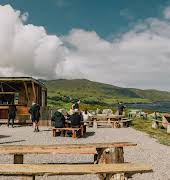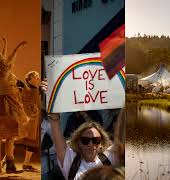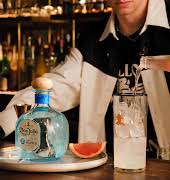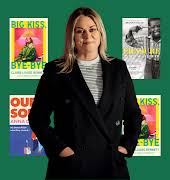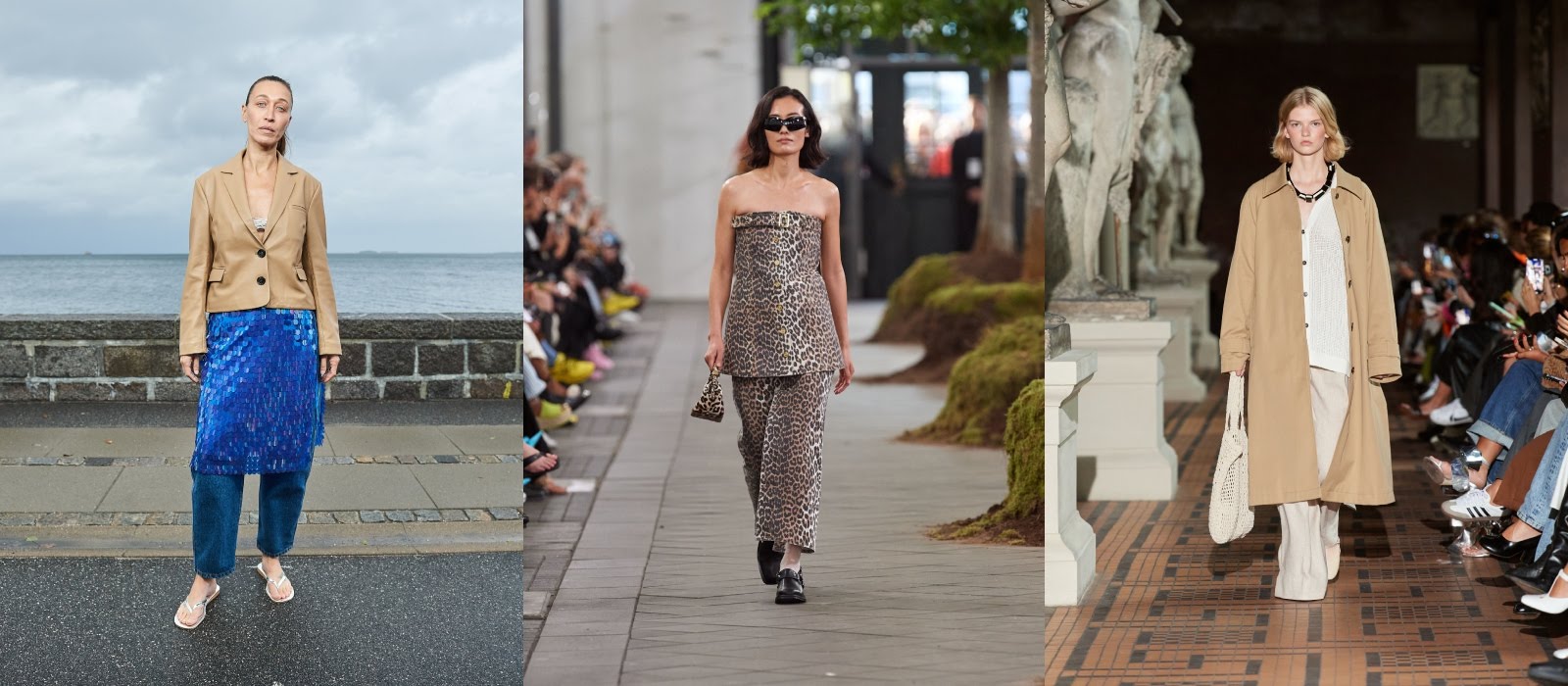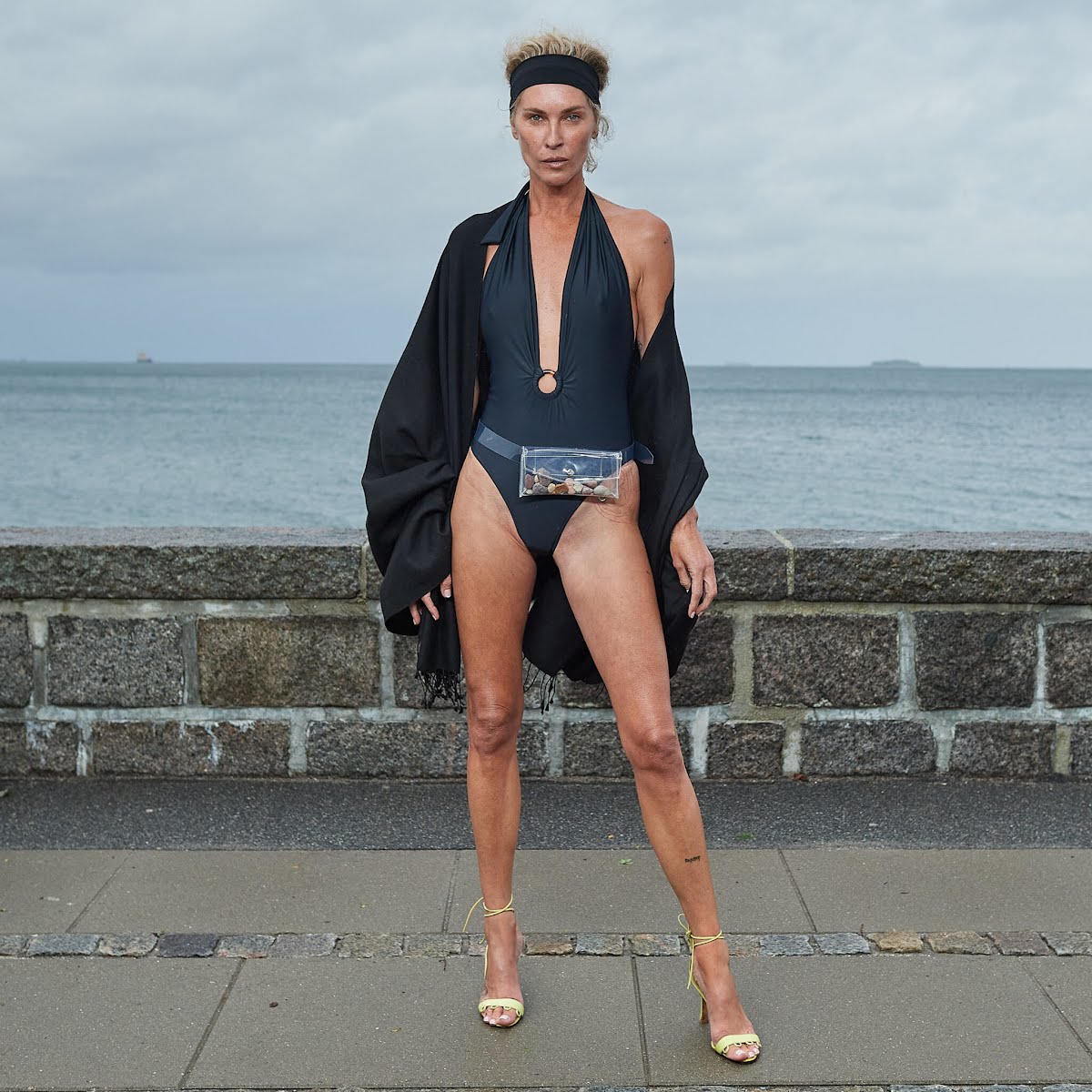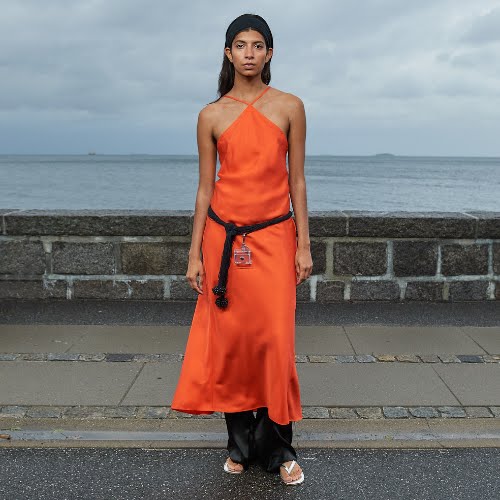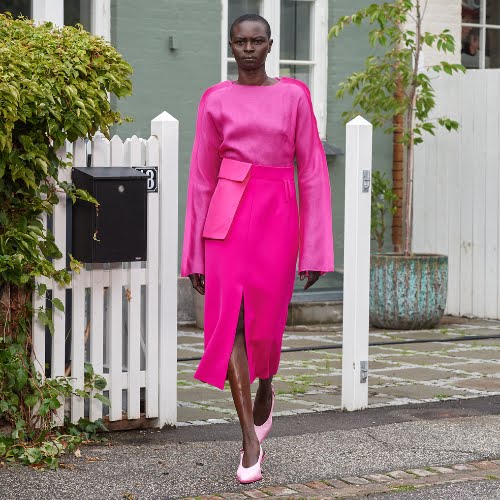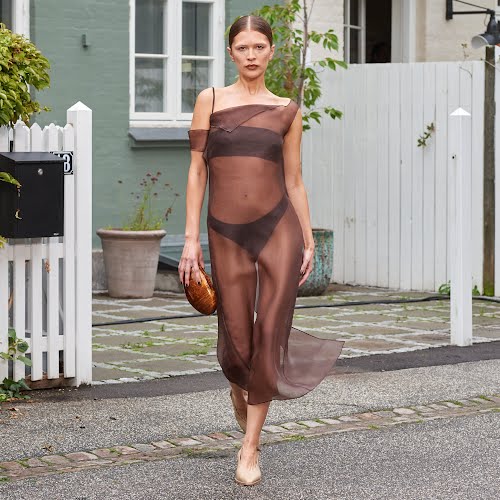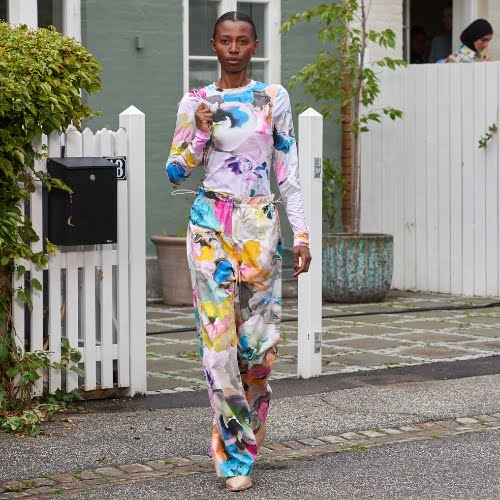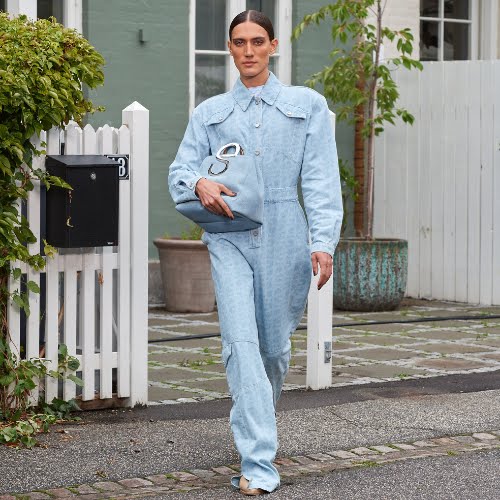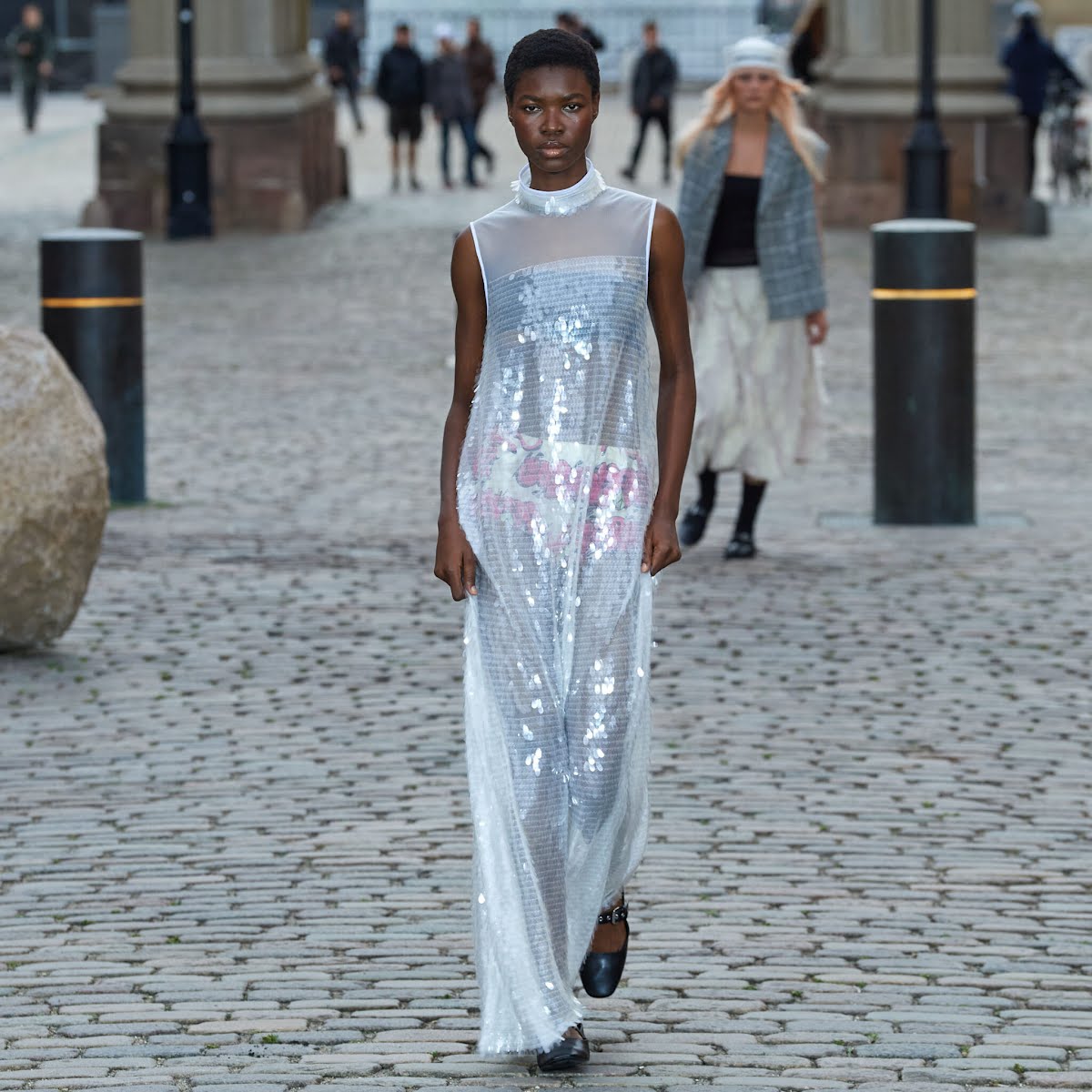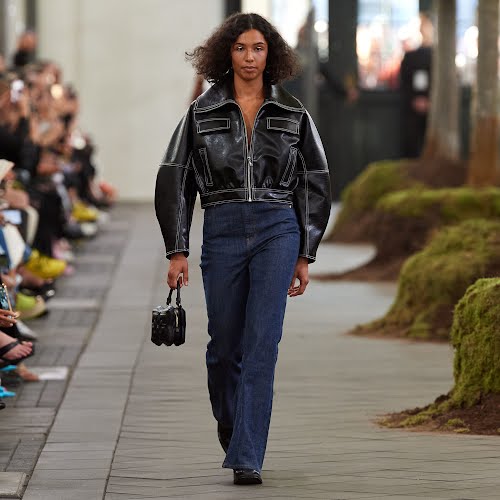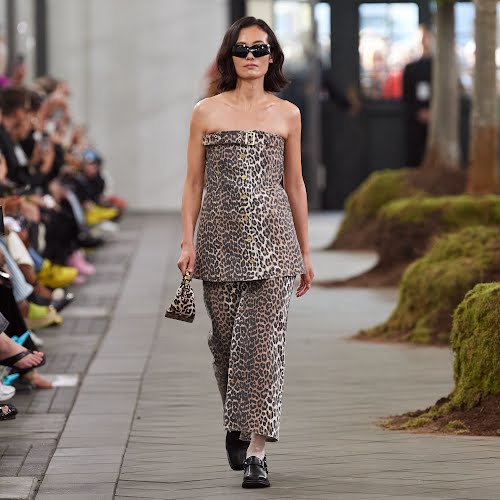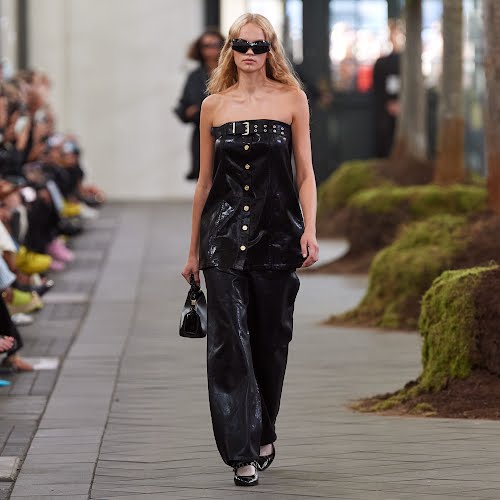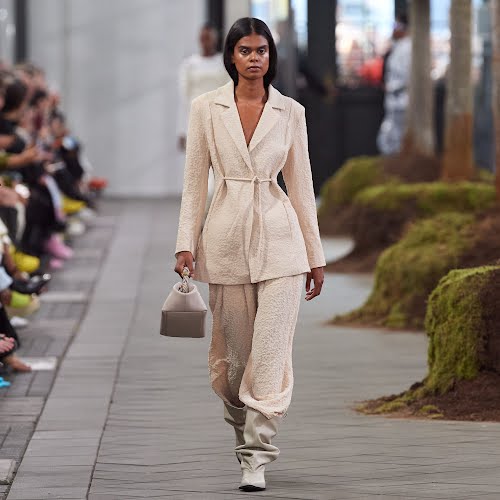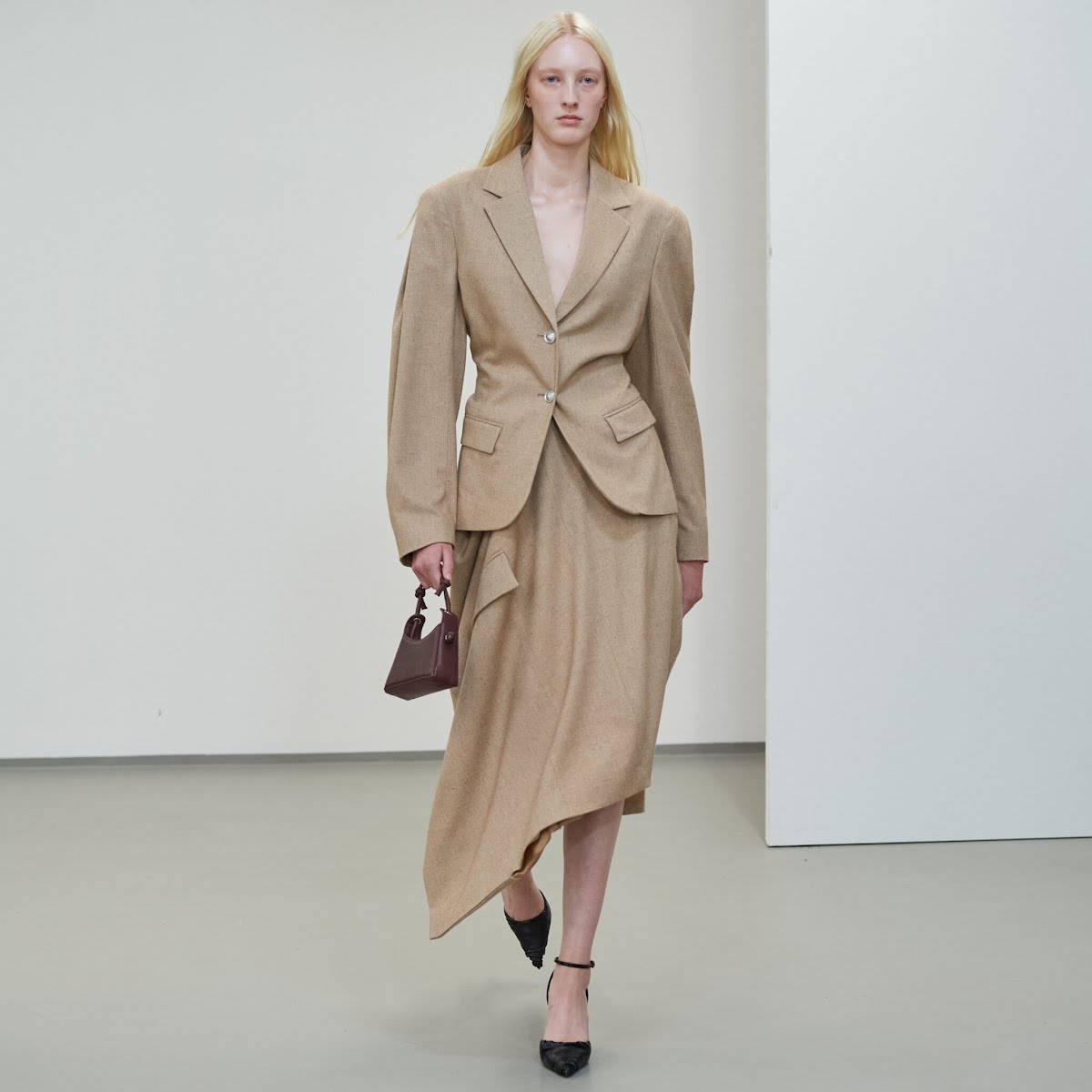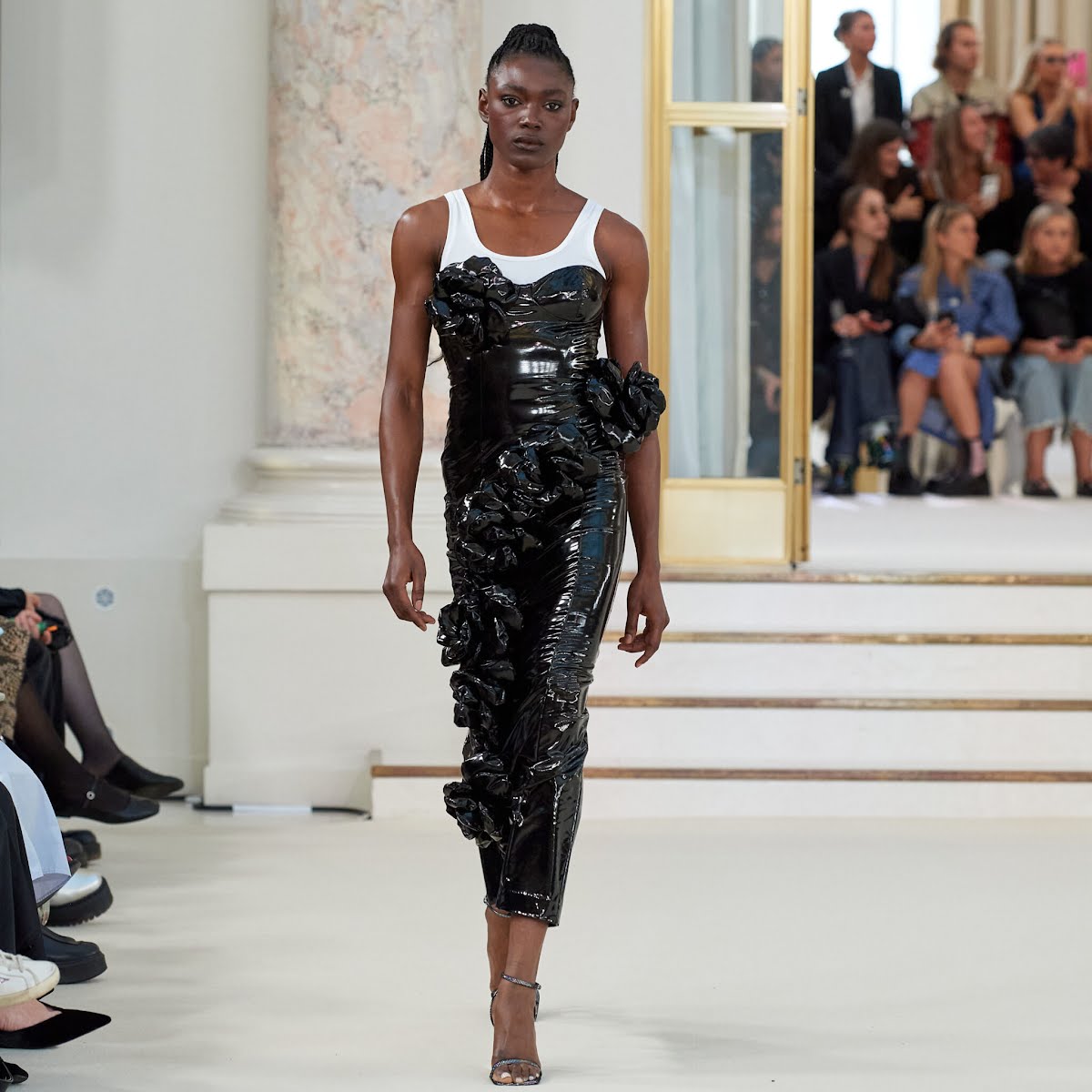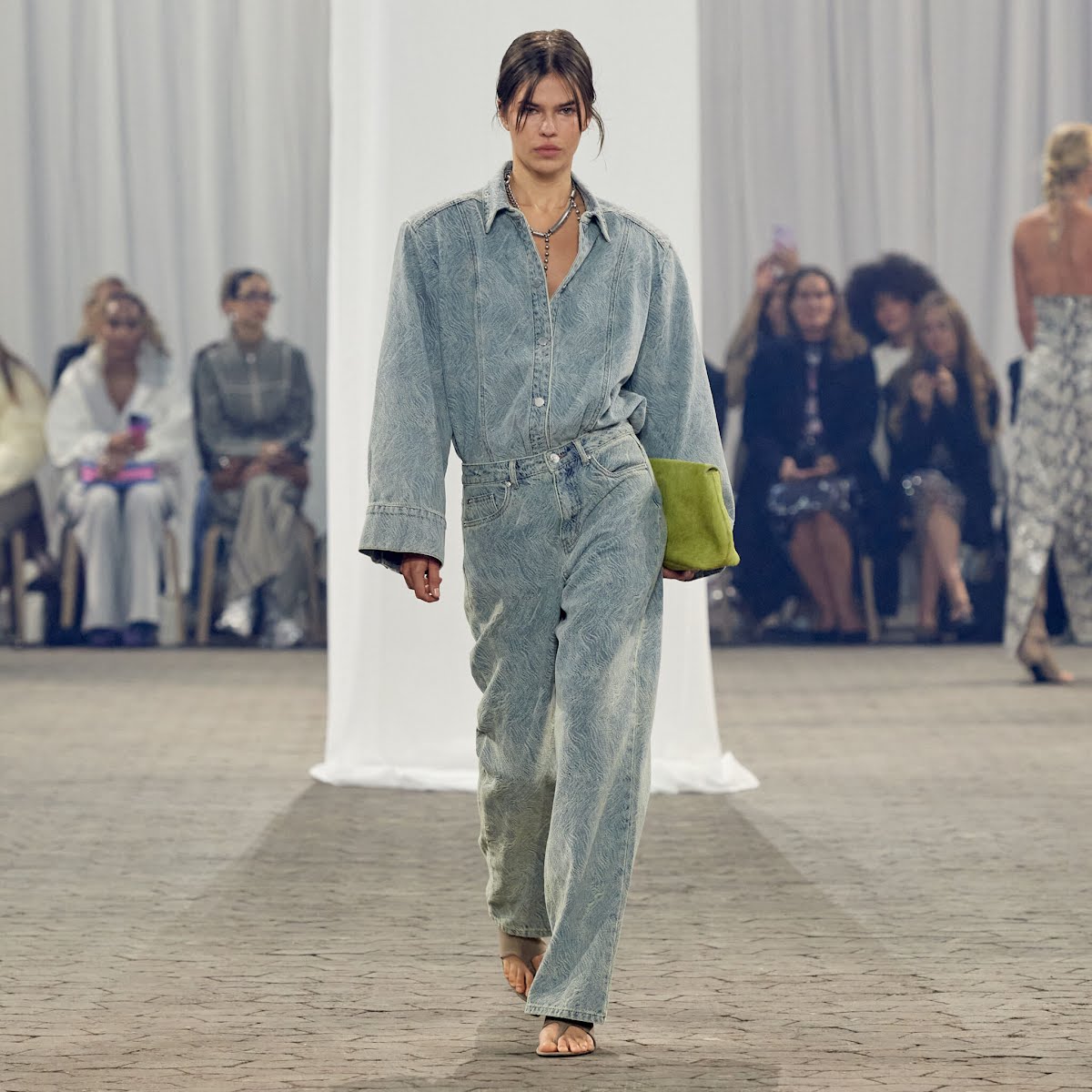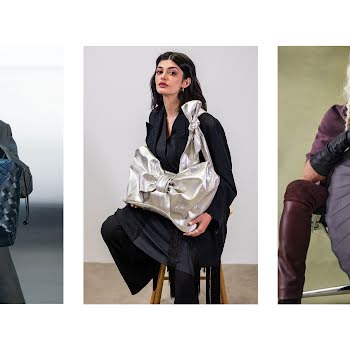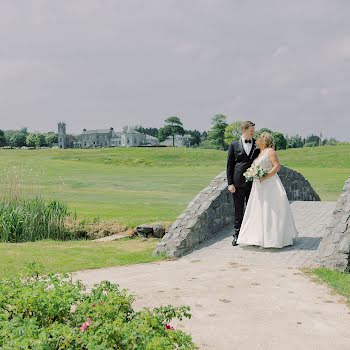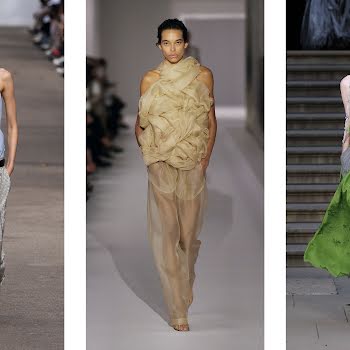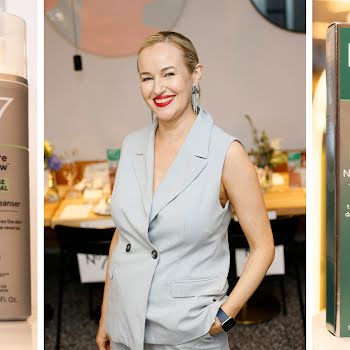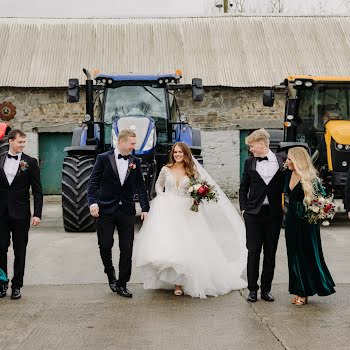
Fashion journalist and stylist Corina Gaffey reports from the runways of Copenhagen Fashion Week, from showery runways to sustainable fabrics, surprise guests and the best style moments.
Every August, street-style shots of trendsetters and tastemakers in sunshine-ready ensembles would fill my Instagram, announcing Copenhagen Fashion Week. Every year, I regretted not attending. Until this year, that is. But it wasn’t the sun-soaked experience I had envisioned – before I landed in Copenhagen, emails from designers advising show-goers to dress for the weather and bring an umbrella were pinged into my inbox.
Sak Potts even asked for it to ‘rain harder’ inspired by Prince’s performance at the Superbowl, which got hit with downpours; instead of being fazed, Prince asked the production team, “can you make it rain harder?” And heavy rain is what the Danish designing duo from Sak Potts got, only because they decided to solider on with an al fresco catwalk, a seaside one. The location was nostalgic and meaningful, much like Stine Goya’s street party-themed show. It was inspired by where the two designers, Catherine Saks and Barbara Potts, grew up and met. Beach chairs were the front-row seats of choice, and the collection consisted of a Sak Potts capsule holiday wardrobe. Think shirting, swimwear and wear-everywhere slinky dresses.
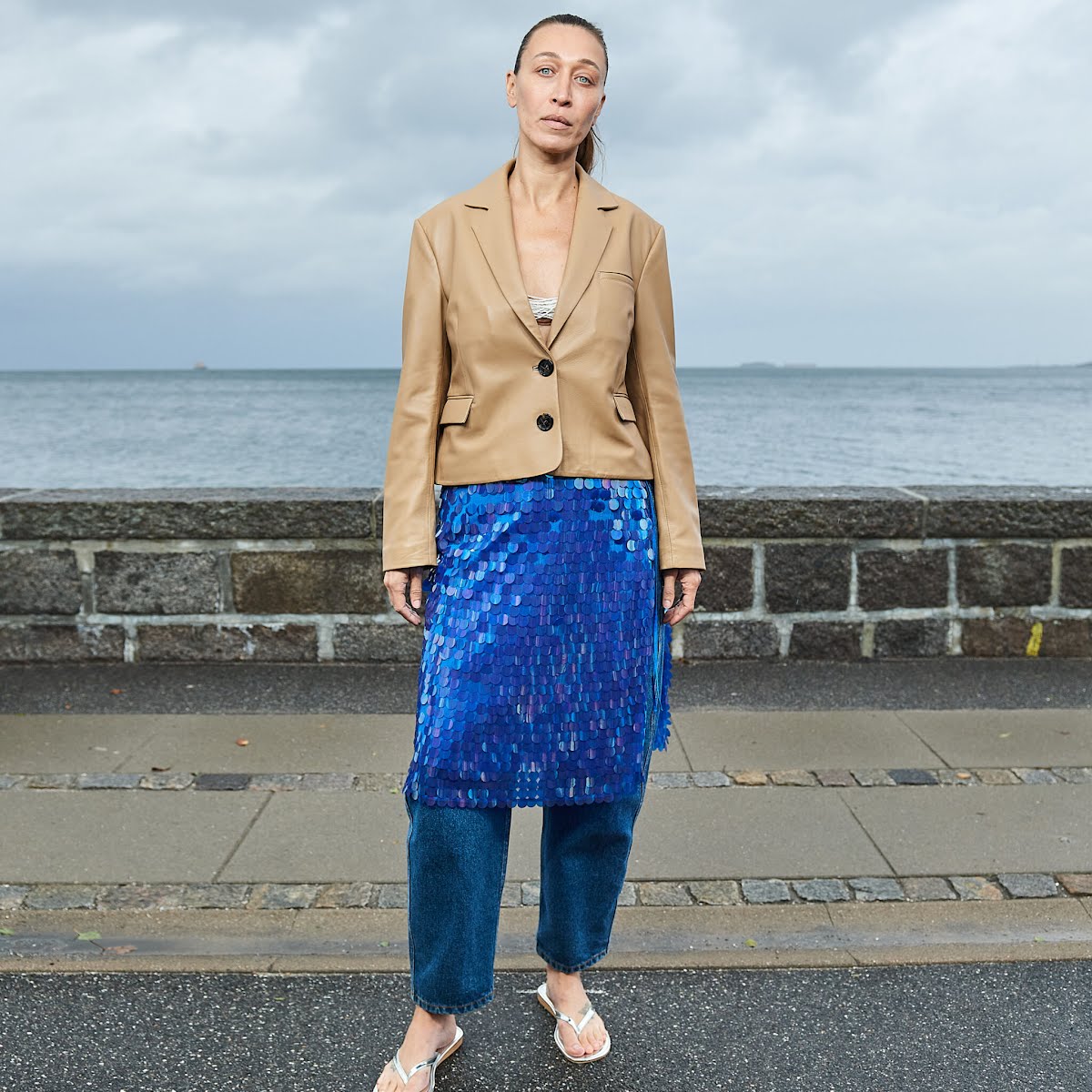
Alana Hadid for Saks Potts SS24
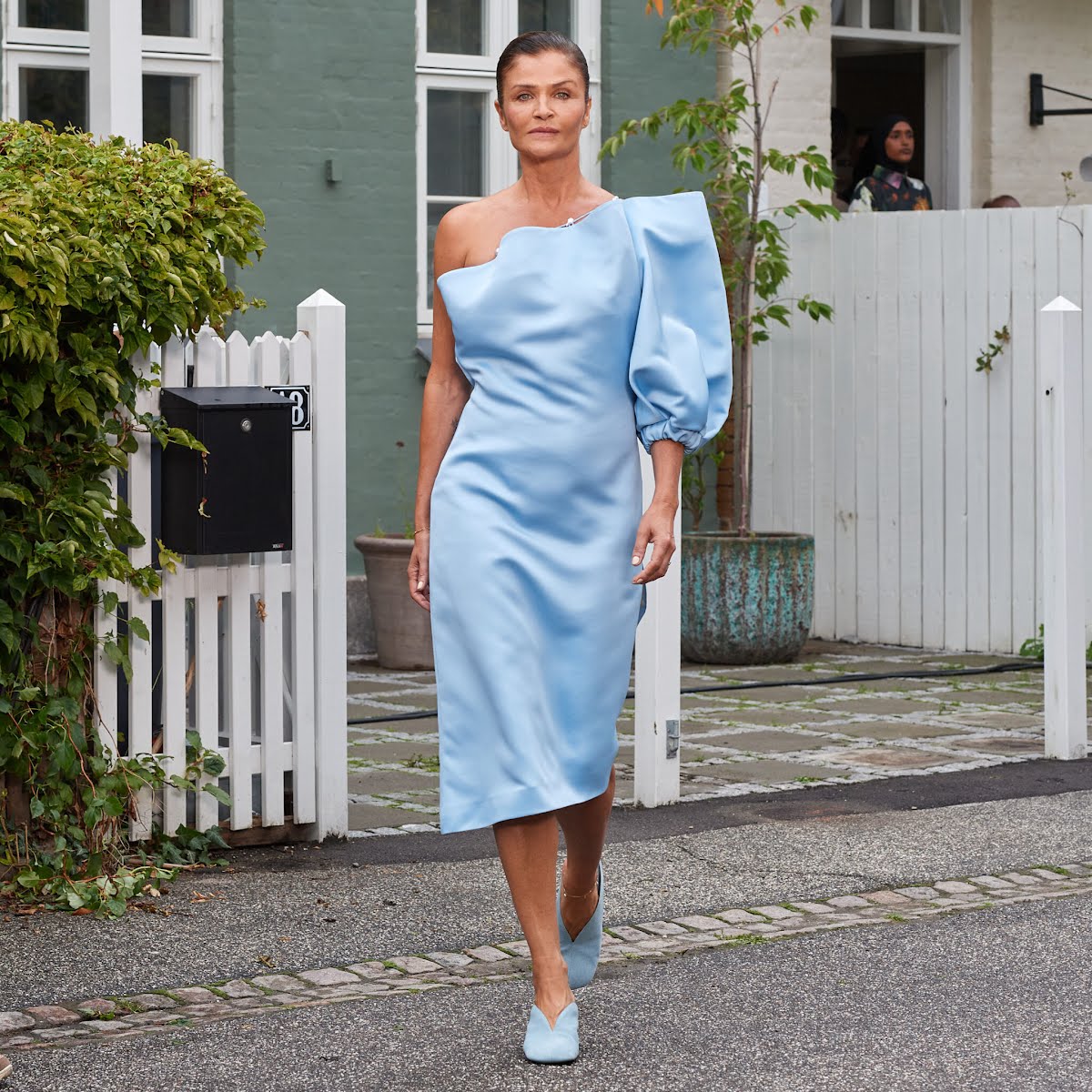
Helena Christensen for Stine Goya SS24
Stine Goya staged their show on Eckersbergade, Stine’s home street, with a show aptly entitled ‘Homecoming.’ Rain-soaked benches were lined up in front of white picket fences, with rain showers clearing in time for models to emerge from various townhouses. Neighbours peered from the windows and cheered from balconies. A long dinner table stretched the length of the runway with place settings provided by the street residents and was the backdrop to the finale, with the models sitting down to enjoy the wares. A strong showing of colour started the show with Barbiecore pink still reigning supreme elegant fashioned into sheer blouses, tailoring and slinky dresses. Although known for their prints, for spring, they were more refined, allowing the silhouettes to speak for themselves.
Another aspect that Stine Goya and Sak Potts had in common was the arrival of surprise stars on the catwalk. For Sak Potts, Noughties model Erin Wasson was decked out in swimwear and closed the show. Joining her sisters in the modelling sphere, Alana Hadid, a half-sister to Bella and Gigi, walked for Sak Potts and Munthe and sat front row at Ganni. Danish supermodel Helena Christensen joined the street party set at Stine Goya and walked the cobblestones in a baby-blue one-shoulder dress.
Cobblestone catwalks, and rain-soaked front rows, were a theme at Copenhagen Fashion Week. Baum Und Pftedgarten, A. Roege Hove, and Skall Studio staged outdoor shows in the wet weather, with models navigating the tricky terrain of slippery stones and show-goers sheltering under umbrellas. Drizzly moments also dominated the Marimekko show on Denmark’s design museum grounds. Minimalist silhouettes were decorated with bright, bold oversized florals, while easy co-ords in towelling fabrics stood out among the grassy terrain.
Merging indoors and outdoors in Zalando’s official venue was Paolina Russo. The Central Saint Martin graduates, Lucile Guilmard and Paolina Russo, were awarded the first Zalando Visionary Award and debuted at Copenhagen Fashion Week. In partnership with CPHFW, the award focuses on sustainable practices and awards the design duo €50,000 and coveted billing at CPHFW. “We are truly thrilled to have been part of Copenhagen Fashion Week as winners of the Zalando Visionary Award – to share and celebrate our work with a large audience is an incredible opportunity. Meeting the high standards of an award like this brings us closer to our goal to modernise craftsmanship and rethink traditional techniques through innovation and fashion that is more responsible,” said Paolina Russo and Lucile Guilmard, Co-Creative Directors. Rune-carved rainbow floors and a stone circle centrepiece decorated an ample warehouse space, evoking folklore inspiration. A diverse cast of models dressed in distressed denim, sun-bleached pastels, and signature knitted dresses circled the set before following the carpet outside.
With a show driven by artificial intelligence, Ganni looked into the future. Tall, white trees flanked the runway in a light-filled atrium. These trees weren’t ordinary but living ones, powered by AI bots programmed with data from Ganni’s community.”We worked with artist Cecilie Waagner Falkenstrøm to create a GANNI AI for the show. We wanted the spirit of the AI to be embodied by a physical form, something natural – my first thought was trees – they are such a symbol of hope and life,” said Ditte Reffstrup, creative director of Ganni. Natural elements were also incorporated into innovative fabrics. A textile made from olive oil, Oleatex, was turned into sleek black leather pieces; another, Algreen, creates sequins from seaweed and agricultural waste. Paloma Elsesser opened the show, prompted by the artificial voice from the tree that told her she looked great and launched into the song Destination Unknown. AI-powered soundtrack continued the upbeat feeling for the culmination of fashion week, and the vibrant feeling was felt in the collections, which Ganni coined as ‘gardening granny punk.’ Sequin-encrusted denim, leopard two-pieces, and sleek tailoring were highlights as guests danced in their seats to Amerie’s One Thing and Shakira’s Whenever Wherever. A New Balance x Ganni-themed afterparty continued the party vibe—the perfect way to end fashion week with karaoke, tattooing, and dancing on seats.
Many designers showed a dichotomy of looks, with a push and pull of minimalist and maximalist styles intertwined. Remain’s collection had a tagline of ‘What it means to be Original’ and staged the show in a stark, white gallery space with large mirrors that reflected on the audience. A fusion of feminine, hourglass silhouettes, bedazzled sequin looks, and sleek separates walked the runway of mirrors. Others went all out. Known for their party-girl aesthetic, Rotate had their show in the breathtaking Palm Court ballroom at the renowned Hotel D’Angleterre. Glitz was always on the agenda, but this time it was merged with punky elements like patent, tassels, and studded grommets. Nipple tassels, corsetry and face coverings brought a rebelliousness to the elegant, decadent surroundings and saccharine pastel-hued collection. Sequins for all seasons have been ubiquitous on the runways for a while, and it continued at Munthe, Baum Und Pferdgarten and Ganni, with the designers incorporating the glitzy texture. Tactile fabrics abound, from fringing to tufted tulle and rug-like fabrics that scream touch-me were also popular with Rotate, A. Roege Hove and Rolf Ekroth. Slinky, sheer separates in chiffon, open-work knits, and tulle proved that baring all, including your briefs, isn’t going anywhere.
In contrast to the sparkle and diaphanous styles, relaxed, polished, wearable, and monochromatic looks, a signature of Danish design, was rife. Gestuz, Remain, and Stine Goya all showcased more feminine, softly tailored, or belted jackets that felt fresh after the domination of oversized tailoring. A crisp white shirt replaced a nice top to become the perfect partner to blue denim, as seen at Munthe, Gestuz, and Skall Studio. Thin striped button-down shirts were elevated from corporate to cool paired with sequins and lace skirts at Baum and Munthe. Denim in various variations and worn head-to-toe were mainstays at Gestuz, Munthe and Stine Goya.
Elsewhere, it was the most un-spring-spring collection; perhaps designers forboded the dreary weather with an assortment of clothing that could transition to any season. Of course, there were fleets of warm weather nods, with the adoption of a bouquet of blooms and soft pastel shades. But earthy, natural tones, mainly brown, at Ganni, Lovechild and Stine Goya cut through the sweetness. Munthe layered up the models in sleeveless shearling gilets and knits, complete with biker boots. But layering wasn’t confined to cold-weather looks, with the Noughties skirts over trousers trend seen at Ganni, Sak Potts, Paolina Russo, Gestuz and Lovechild. Another Y2k trend – the motorcycle jacket – switched between the front row and the runway, while J. Linderbergh accelerated the trend with a motor-cross-inspired show fusing fashion, athletic elements, and sleek styles.
Photography via Copenhagen Fashion Week.

